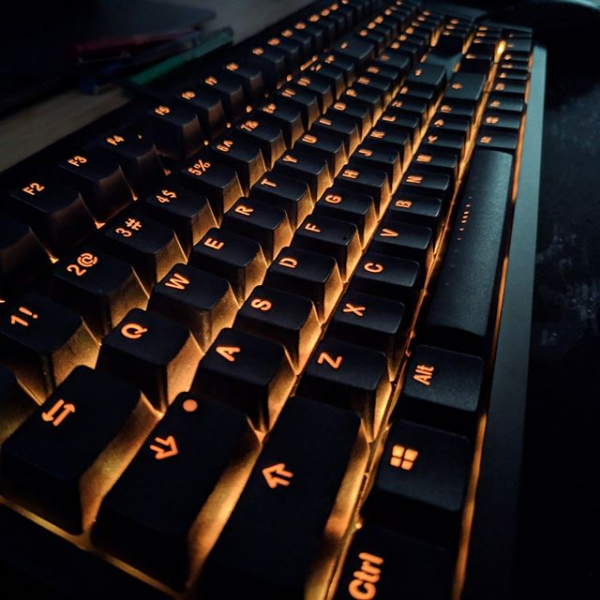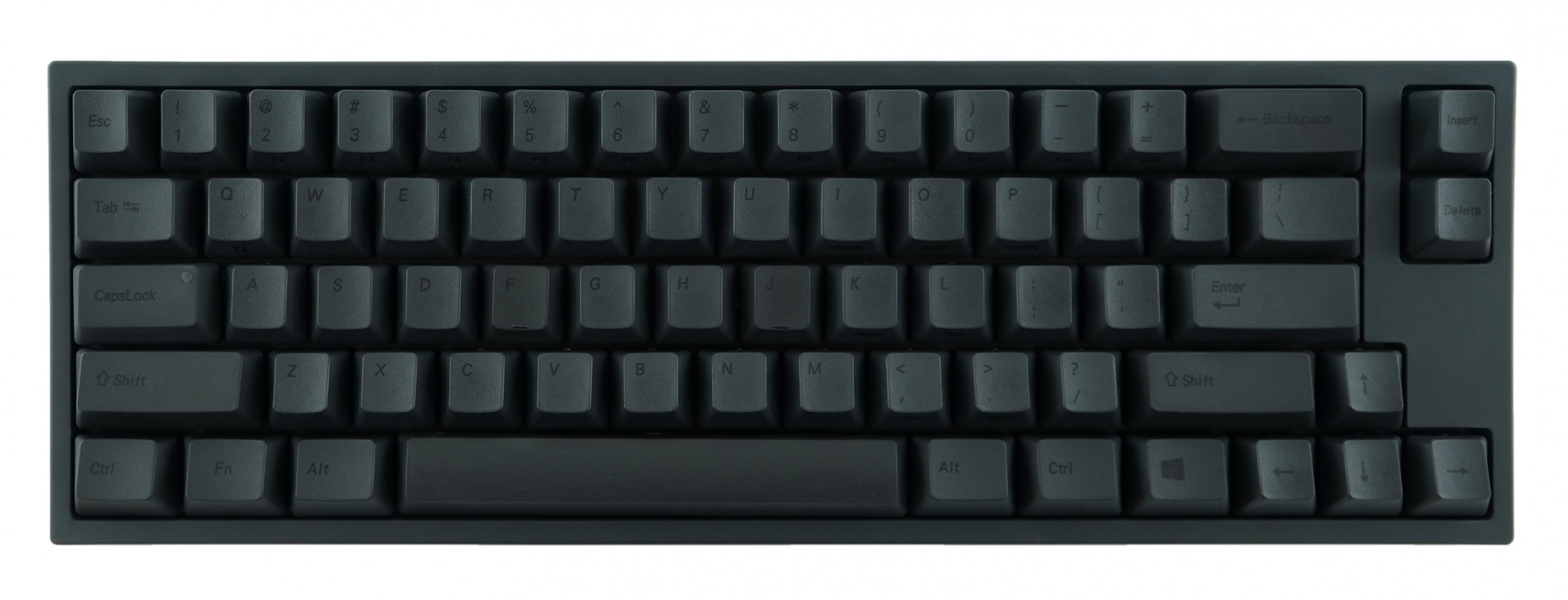Lenovo recently released their Thinkpad TrackPoint Keyboard II which I got super excited about. I could finally use a keyboard identical to my laptop's while not having the laptop down on my desk, something that's bad for posture and causes neck strain. But while looking at it, and some other options, I found some very pretty mechanical keyboards from brands that I had never heard of before. After a few days of searching the web and watching review videos, I decided to go for a mechanical keyboard instead of the Lenovo one. That's the prelude to my journey of acquiring my first mechanical keyboard.
In this little article, I'll talk about mechanical keyboards in general, and then talk specifically about the one that I chose. If you're here just for the review of IKBC MF108, feel free to skip to the actual review.
What is a mechanical keyboard?
Unlike a membrane based keyboard found on most laptops and many cheaper desktop keyboards that we're all familiar with, mechanical keyboards have a separate switch for each key. The switch action is similar to how a household electrical switch works; with a metal contact completing the circuit and registering a 'click'. The kind of switch determines how the switch will react to being pressed (if it will make a click sound, or if it will have a tactile feedback, or if it will be heavy or light etc). I recommend this helpful video to get a better idea.
Mechanical keyboards are, generally speaking, more expensive than their membrane counterparts. They also last quite a bit longer, which is mostly due to quality materials that go into their manufacturing (Cherry claims 50 million clicks for the Cherry MX Blue switches). These keyboards can be customized with a wide variety of keycaps (the part that we touch with our fingertips while typing), switches (the part that actually registers the keypress - look at the image below) and the case (the enclosure for all of the components).


Apart from the functional stuff, many of the mechanical keyboards have some sort of backlighting, even fully customizable RGB for aesthetics (and for typing in the dark if you need to look at certain keys).
IKBC MF108 V3
Okay, so let's get to the meat of this article. My first mechanical keyboard and my thoughts after having owned it for the last four days or so.
Build quality
As soon as the delivery person hands you the package containing the keyboard, you'll notice the weight. It is heavy, and not in the way of a sensation or feeling. It is literally heavy. How heavy, you might ask. Very. You'd probably not be able to pick it up with just one hand, and to someone unsuspecting, they might think it is glued to the desk if they try picking it up. It weights around 2.5 kilograms, and can cause serious injury if you drop it on your foot.
I made a very amateur unboxing video that's embedded below. It shows what you get in the retail box and my initial impressions. I'll link some timestamps in the video description so that you can skip to points of interest (it is a super long video of me fiddling with stuff).
Connectivity
It comes with a USB cable (USB-C port in the center on the back) and connected seamlessly to my laptop running Ubuntu. I don't mind the lack of bluetooth/wireless. Would've been nice for some minimalistic desk setup, but I'm not very keen on such things.
Included accessories
A couple of accessories are included with the keyboard. Extra blue and red keycaps which are fairly low quality. A dust cover that doesn't fit. The USB cable feels nice to the touch.
Overall I'd expect more quality in the accessories department for the price. On the bright side, the part that actually matters--the keyboard itself--looks uncompromised on quality. My unboxing video has timestamp to the point where I show all of these accessories.
RGB backlight

I loved the backlight. The lights can be controlled from the keyboard itself (brightness, per key color, prebuilt modes, stopwatch functionality etc) and thankfully doesn't need a software (it is especially important if you don't run Windows OS as most of these software are made exclusively for Windows).
Typing and click-y sound
I'm not super fast at typing, but could type at roughly the same speed as on my laptop at around ~65wpm.
Double shot ABS keycaps
This keyboard features ABS double shot keycaps. ABS is considered inferior as compared to PBT found on many other competing keyboards. This article goes into the difference in detail. Since this is my first keyboard, I don't have a taste so can't comment. Also, it is fairly easy to replace keycaps whenever you feel the need for change.
Price and purchasing - Shout out to CandyCase
It is retailing for EUR 190 at CandyKeys at the time of my writing, which is exactly what I paid for it. It is hard to get an ANSI layout keyboard, or any mechanical keyboard for that matter, here in Europe (slightly envious of my friends in the US right now).
I can highly recommend CandyKeys and its founder David (who handles the support@ email address). Super quick with the support and provides honest recommendations (didn't expect that). The processing took a couple of days after payment and so did the shipping. Overall, very satisfied with the service so far.
Certain misconceptions about mechanical keyboards
Mechanical keyboards are only for gamers: They certainly are for gamers but a lot of people who work with computers, including software developers, also prefer these keyboards because typing on them is a joy.
Mechanical keyboards are loud: Some are, while others aren't. There are tons of options when it comes to choosing the switches.
Mechanical keyboards are gimmicky: There's no shortage of bright blinking mechanical keyboards that scream "look at me", but there also are very professional beautiful keyboards that'd sit on your desk without a hint of the brilliancy unless someone decides to take a closer look.

Mechanical keyboards will make your friends/colleagues go wow!: Most people will roll their eyes if you start talking about your beautiful keyboard or how nice the clicks sound. Probably the only people who'll care are a bunch of random internet strangers over at r/MechanicalKeyboards, so make sure you post a snap of your new keyboard there.
Mechanical keyboards make you a 10x programmer (or gamer): I honestly think it doesn't make that huge of a difference in your overall productivity. They certainly are a joy to type on and add character to your workstation, but is it worth spending hundreds of Euros on? Depends on what you currently have. Probably a secondary monitor would do you more good :) But hey, if you can afford one and it brings you happiness everytime you look at it, go for it!
In closing
That's it for my keyboard review article. I hope you found it useful. Your first keyboard doesn't have to be super expensive. There are plenty of good quality keyboards in 60% or TKL sizes (more on sizes here: keyboardco.com) that would've been my first priority had they been in stock. Ducky, Leopold, Anne Pro are some of the brands I kept hearing about all over the place (perhaps good marketing?) so do check them out.
Before deciding on the switch type, I went to a nearby electronics store to try the different switches on the keyboards on display there. I'd recommend you do the same if this is your first time, just like me. If you have any questions or comments, feel free to write me an email.
Thank you for reading (and watching)!